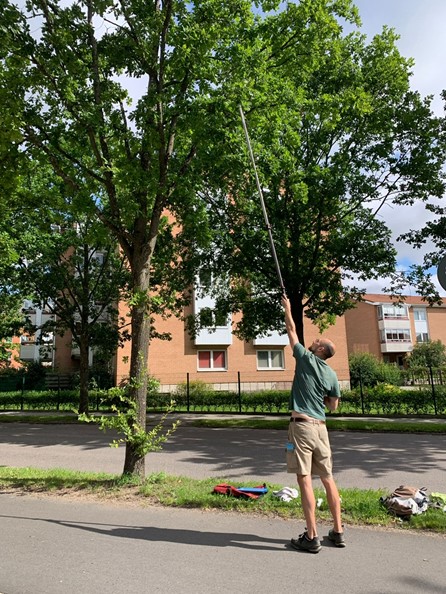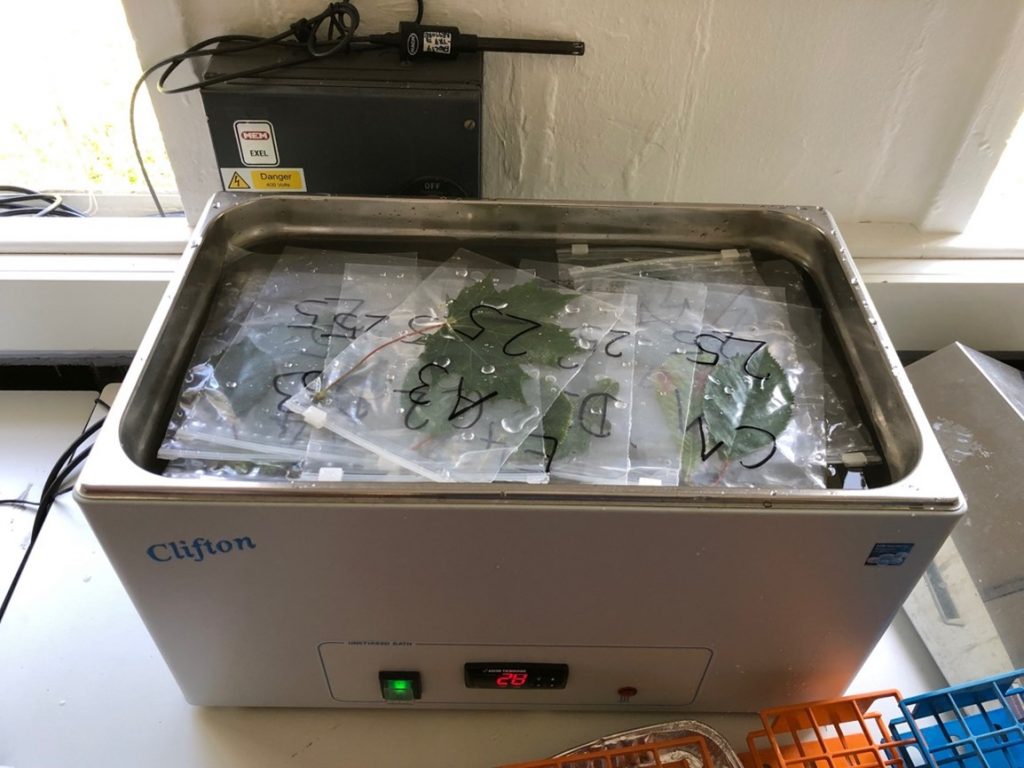Extreme summer heatwaves have become more frequent in the last decades, causing a large number of heat-related deaths. In cities, heat stress not only affects the health of the people, but also that of the urban vegetation, particularly urban trees. Tree species show contrasting tolerances to heat stress, and individuals of a species may acclimate to a certain degree to their environment by growing more resistant tissue, thus enhancing their heat tolerance. However, we do not yet know how species differ, and how plastic foliar heat tolerance is. To better understand which trees are at risk of dying during summer heatwaves, we need more high-resolution measurements.
In this ongoing project we measure heat tolerance of urban tree species across several cities in Switzerland, (Geneva, Lausanne, Bienne and Neuchâtel) and Europe (Barcelona, Lund, Birmingham). We will compare the heat tolerance of the most planted tree species and assess their plasticity across cities. Based on their tolerances we will calculate safety margins for recurrent heatwaves, which will reveal the species that are at highest risk of mortality.



For more information contact Christoph Bachofen.